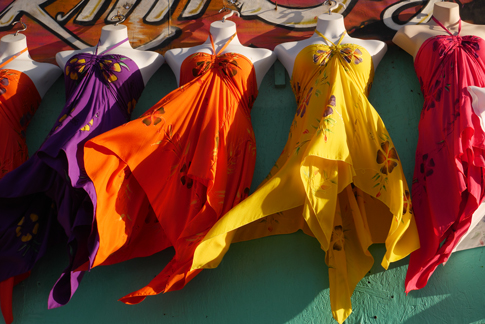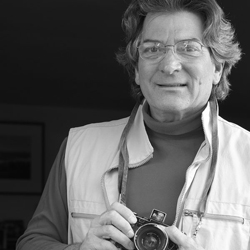PANASONIC LUMIX DMC-G7 DIGITAL CAMERA REVIEW
BY ANTHONY FRIEDKIN
Recently, I was asked to try out the Panasonic Lumix DMC-G7 Digital SLR and share my impressions with our readers. Upon picking the camera up, I was immediately struck by how incredibly light it is. But don’t confuse the weight of this camera with its quality! Make no mistake about it: this camera delivers both excellent still photos and superior quality video.
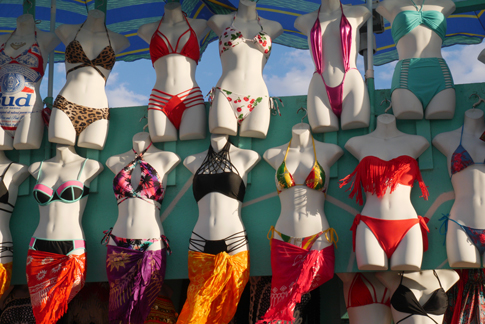
The Panasonic Lumix DMC-G7 has many wonderful applications, depending on how one intends to use it. The lightness is, in fact, a real treat to experience. I often shoot with my Leica film cameras or my very heavy, high-end digital SLR’s. I generally keep my camera around my neck and after a while, it can wear you down with the weight. The Panasonic Lumix DMC-G7 feels so light that it becomes a joy to walk around and shoot with. It would be a great camera to take on a trip, to a special event, or just to keep with you at all times.
The G-7 also comes with some impressive specifications.It’s a superior mirrorless-interchangeable-lens camera, and is a convincing alternative to similarly -priced dSLRs. The G7 brings Panasonic’s mid-range line of consumer and family-oriented models up to date with features like 4K/UHD (Ultra High Definition) video and the company’s most current autofocus and image processing systems.

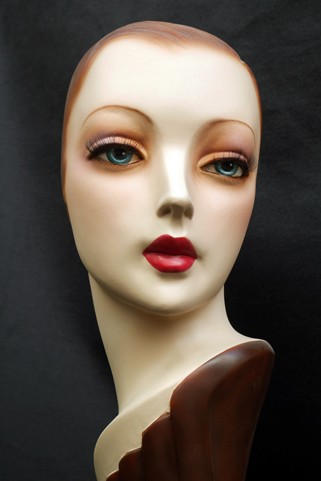
This camera has a Micro Four Thirds MOS sensor that delivers an impressive 16-megapixel image, which can be recorded in both RAW/JPEG – and individual combinations thereof.
The Four Thirds size sensor reproduces colors quite accurately,  with a significant dynamic range. The ISO sensitivity is remarkable and ranges from 100 all the way up to 25600. The camera also produces wonderful imagery in low-light situations, which I know from experience can come in very handy.
with a significant dynamic range. The ISO sensitivity is remarkable and ranges from 100 all the way up to 25600. The camera also produces wonderful imagery in low-light situations, which I know from experience can come in very handy.
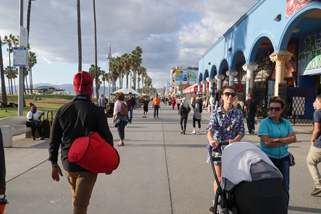 can be attained and reproduced. Panasonic has their own RAW processing software, know as SILKYPIX, which gives a very similar type of control over your still photos, much the same as Adobe’s standard applications in Photoshop.
The camera comes with a 14-42 mm lens (this would be equal to a 28-84 mm range on a standard 35mm camera). The aperture is F 3.5-5.6 and the sharpness of the lens, overall, is impressive.
In addition, Panasonic has manufactured and created an incredible line of Panasonic lenses specifically for this camera. They are easily available, and one can purchase them separately. For example, they offer zooms in the range of 45-150 mm all the way up to a 100-300 mm telephoto-zoom.
can be attained and reproduced. Panasonic has their own RAW processing software, know as SILKYPIX, which gives a very similar type of control over your still photos, much the same as Adobe’s standard applications in Photoshop.
The camera comes with a 14-42 mm lens (this would be equal to a 28-84 mm range on a standard 35mm camera). The aperture is F 3.5-5.6 and the sharpness of the lens, overall, is impressive.
In addition, Panasonic has manufactured and created an incredible line of Panasonic lenses specifically for this camera. They are easily available, and one can purchase them separately. For example, they offer zooms in the range of 45-150 mm all the way up to a 100-300 mm telephoto-zoom.
 There’s also a wonderful option for shooting stills in a burst mode, meaning you can record a full second of time, then go back and select the very best still from the sequence you’ve just recorded.
On the back of the camera there is a 3-inch viewing screen. It’s very sharp, and can be adjusted to your ideal viewing angle. For example, this can be useful for shooting “selfies.” The Panasonic Lumix DMC-G7 also has a traditional viewfinder, which can be used like any digital single-lens reflex camera.
One of the things I liked most about this camera, when shooting in the still-photo mode, is that it gives me choices about how I want to program the camera to take the picture. I have the option, of course, of setting the camera on “auto” and letting it decide on everything concerning the exposure, which it does extremely well.
There’s also a wonderful option for shooting stills in a burst mode, meaning you can record a full second of time, then go back and select the very best still from the sequence you’ve just recorded.
On the back of the camera there is a 3-inch viewing screen. It’s very sharp, and can be adjusted to your ideal viewing angle. For example, this can be useful for shooting “selfies.” The Panasonic Lumix DMC-G7 also has a traditional viewfinder, which can be used like any digital single-lens reflex camera.
One of the things I liked most about this camera, when shooting in the still-photo mode, is that it gives me choices about how I want to program the camera to take the picture. I have the option, of course, of setting the camera on “auto” and letting it decide on everything concerning the exposure, which it does extremely well. 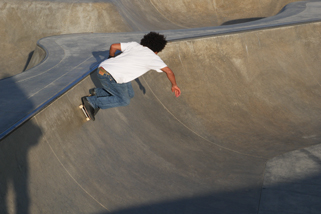 I can also select a manual mode, where I decide on the shutter speed and F-stop and ISO, or I can select aperture or shutter speed priority The Panasonic Lumix DMC-G7 comes with a fast and reliable auto-focus system. When photographing for “decisive moments” this becomes extremely helpful. There’s also a focus-touch screen application, which means you literally can touch the viewing screen and where you place your finger the camera will then focus on that spot.
It’s important to mention that the Panasonic Lumix DMC-G7 comes with wi-fi for remote shooting and image transfer. For those who want to share pictures with friends and family, this is a great asset.
One can really get serious with this camera. Panasonic has made a very sophisticated and highly thought-out camera system in the G-series.
I can also select a manual mode, where I decide on the shutter speed and F-stop and ISO, or I can select aperture or shutter speed priority The Panasonic Lumix DMC-G7 comes with a fast and reliable auto-focus system. When photographing for “decisive moments” this becomes extremely helpful. There’s also a focus-touch screen application, which means you literally can touch the viewing screen and where you place your finger the camera will then focus on that spot.
It’s important to mention that the Panasonic Lumix DMC-G7 comes with wi-fi for remote shooting and image transfer. For those who want to share pictures with friends and family, this is a great asset.
One can really get serious with this camera. Panasonic has made a very sophisticated and highly thought-out camera system in the G-series. There are numerous wide-angle lenses available for the Panasonic Lumix DMC-G7, including a Fisheye 8mm. Not only does this give the still photographer an enormous range of focal lengths to use artistically, but it also allows the videographer a fantastic range of lenses to shoot with to create professional-looking videos.
The Panasonic Lumix DMC-G7 is capable of producing 4K video. It does this with beautiful results, by accomplishing superb resolution for viewing motion pictures. The camera’s engineers also provided a number of ways to record video, depending on one’s needs.
There are numerous wide-angle lenses available for the Panasonic Lumix DMC-G7, including a Fisheye 8mm. Not only does this give the still photographer an enormous range of focal lengths to use artistically, but it also allows the videographer a fantastic range of lenses to shoot with to create professional-looking videos.
The Panasonic Lumix DMC-G7 is capable of producing 4K video. It does this with beautiful results, by accomplishing superb resolution for viewing motion pictures. The camera’s engineers also provided a number of ways to record video, depending on one’s needs.





